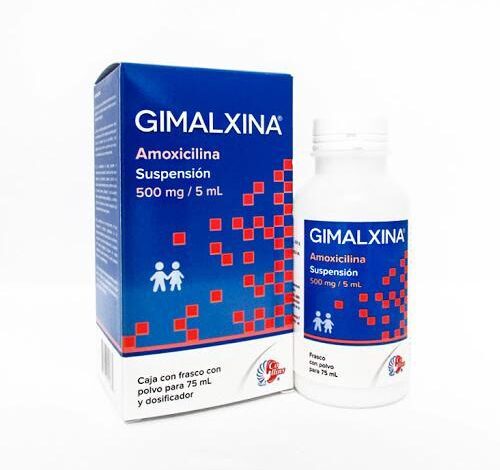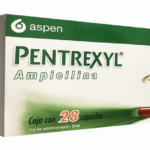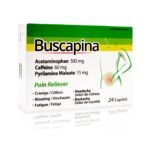Gimalxina: Uses, Dosage, Side Effects, Interactions

What is Gimalxina?
Gimalxina is a Mexican brand of Amoxicillin trihydrate, a penicillin antibiotic that fights bacteria. Amoxicillin is used to treat many different types of infection caused by bacteria, such as tonsillitis, bronchitis, pneumonia, and infections of the ear, nose, throat, skin, or urinary tract. Antibiotics such as Gimalxina will not work for colds, flu, and other viral infections. Taking antibiotics when they are not needed increases your risk of getting an infection later that resists antibiotic treatment.
Gimalxina is also sometimes used together with another antibiotic called clarithromycin (Biaxin) to treat stomach ulcers caused by Helicobacter pylori infection. This combination is sometimes used with a stomach acid reducer called lansoprazole (Prevacid).
How to use Gimalxina
Gimalxina comes as a capsule and as a suspension (liquid) to take by mouth. It is usually taken every 12 hours (twice a day) or every 8 hours (three times a day) with or without food. The length of your treatment depends on the type of infection that you have. Take Gimalxina at around the same times every day. Follow the directions on your prescription label carefully, and ask your doctor or pharmacist to explain any part you do not understand. Take amoxicillin exactly as directed. Do not take more or less of it or take it more often than prescribed by your doctor.
Shake the Gimalxina suspension well before each use to mix the medication evenly. The suspension may be placed directly on the child’s tongue or added to formula, milk, fruit juice, water, ginger ale, or another cold liquid and taken immediately.
Swallow the capsules whole with a full glass of water; do not chew or crush them.
You should begin to feel better during the first few days of treatment with amoxicillin. If your symptoms do not improve or get worse, call your doctor.
Take Gimalxina until you finish the prescription, even if you feel better. If you stop taking Gimalxina too soon or skip doses, your infection may not be completely treated and the bacteria may become resistant to antibiotics.
What should I do if I forget a dose?
Take the missed dose as soon as you remember it. However, if it is almost time for the next dose, skip the missed dose and continue your regular Gimalxina dosing schedule. Do not take a double dose to make up for a missed one.
What side effects can Gimalxina cause?
Gimalxina may cause side effects. Tell your doctor if any of these symptoms are severe or do not go away:
• nausea
• vomiting
• diarrhea
• changes in taste
• headache
Some side effects can be serious. If you experience any of these symptoms, stop taking amoxicillin and call your doctor immediately or get emergency medical treatment:
• rash
• skin blisters or peeling
• itching
• hives
• wheezing
• difficulty swallowing or breathing
• swelling of the face, throat, tongue, lips, and eyes
• severe diarrhea (watery or bloody stools) that may occur with or without fever and stomach cramps (may occur up to 2 months or more after your treatment)
Gimalxina may cause other side effects. Call your doctor if you have any unusual problems while taking this medication.
If you experience a serious side effect, you or your doctor may send a report to the Food and Drug Administration’s (FDA) MedWatch Adverse Event Reporting program online (http://www.fda.gov/Safety/MedWatch) or by phone (1-800-332-1088).
Can I overdose on Gimalxina?
In case of overdose, call the poison control helpline at 1-800-222-1222. Information is also available online at https://www.poisonhelp.org/help. If the victim has collapsed, had a seizure, has trouble breathing, or can’t be awakened, immediately call emergency services at 911.
Symptoms of Gimalxina overdose may include the following:
• cloudy or bloody urine
• decreased urination
• swelling of any part of the body
• confusion
• nausea
• vomiting
What should I know about storage and disposal of Gimalxina?
Keep this medication in the container it came in, tightly closed, and out of reach of children. Store the capsules and tablets at room temperature and away from excess heat and moisture (not in the bathroom). The liquid medication preferably should be kept in the refrigerator, but it may be stored at room temperature. Do not freeze. Dispose of any unused liquid medication after 14 days.
It is important to keep all medication out of sight and reach of children as many containers (such as weekly pill minders and those for eye drops, creams, patches, and inhalers) are not child-resistant and young children can open them easily. To protect young children from poisoning, always lock safety caps and immediately place the medication in a safe location – one that is up and away and out of their sight and reach. http://www.upandaway.org
Unneeded medications should be disposed of in special ways to ensure that pets, children, and other people cannot consume them. However, you should not flush this medication down the toilet. Instead, the best way to dispose of your medication is through a medicine take-back program. Talk to your pharmacist or contact your local garbage/recycling department to learn about take-back programs in your community. See the FDA’s Safe Disposal of Medicines website (http://goo.gl/c4Rm4p) for more information if you do not have access to a take-back program.
Gimalxina Safety Information
Do not use Gimalxina if you are allergic to amoxicillin or to any other penicillin antibiotic, such as ampicillin (Omnipen, Principen), dicloxacillin (Dycill, Dynapen), oxacillin (Bactocill), penicillin (Beepen-VK, Ledercillin VK, Pen-V, Pen-Vee K, Pfizerpen, V-Cillin K, Veetids), and others.
Before using Gimalxina, tell your doctor if you are allergic to cephalosporins such as Omnicef, Cefzil, Ceftin, Keflex, and others. Also tell your doctor if you have asthma, liver or kidney disease, a bleeding or blood clotting disorder, mononucleosis (also called “mono”), or any type of allergy.
Gimalxina can make birth control pills less effective. Ask your doctor about using a non-hormone method of birth control (such as a condom, diaphragm, spermicide) to prevent pregnancy while taking this medicine. Take this medication for the full prescribed length of time. Your symptoms may improve before the infection is completely cleared. Amoxicillin will not treat a viral infection such as the common cold or flu. Do not share this medication with another person, even if they have the same symptoms you have.
Antibiotic medicines like Gimalxina can cause diarrhea. This may happen while you are taking amoxicillin, or within a few months after you stop taking it. This may be a sign of a new infection. If you have diarrhea that is watery or bloody, stop taking this medicine and call your doctor. Do not use anti-diarrhea medicine unless your doctor tells you to.





